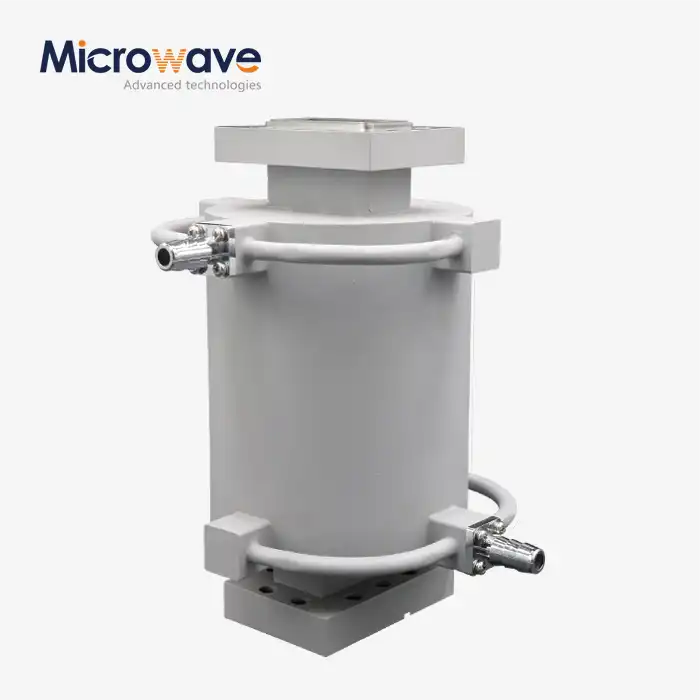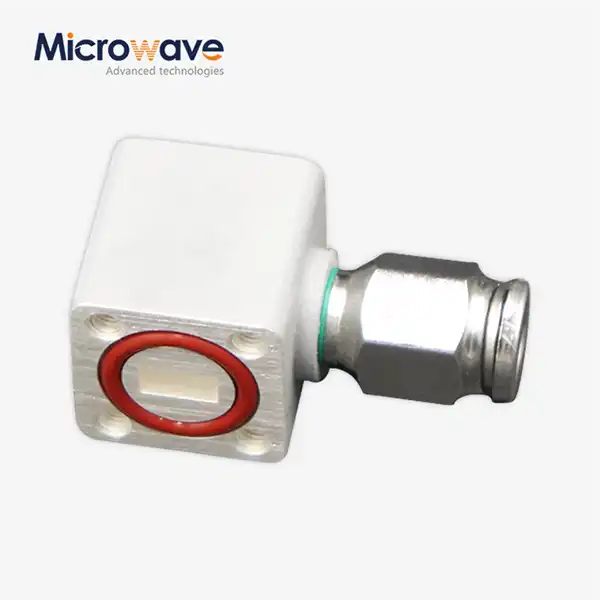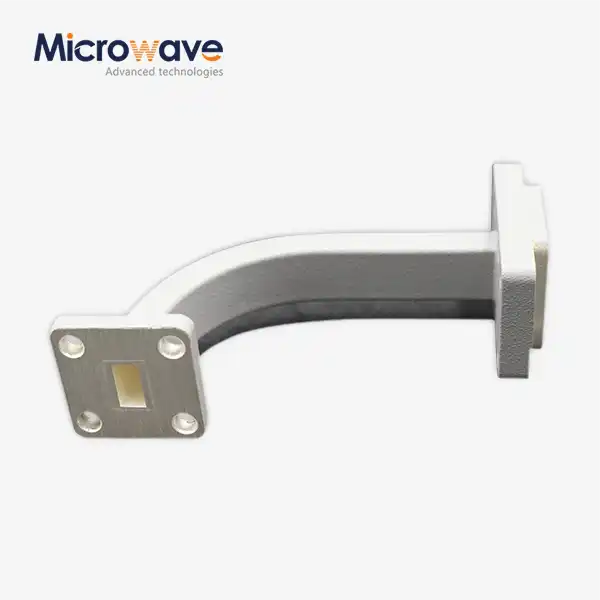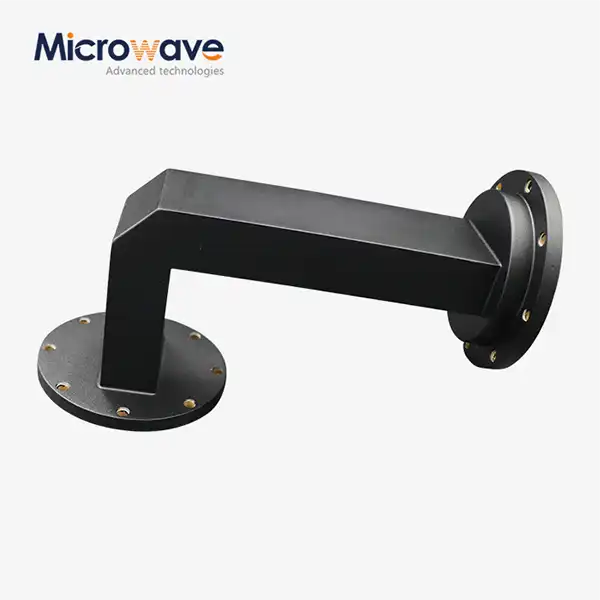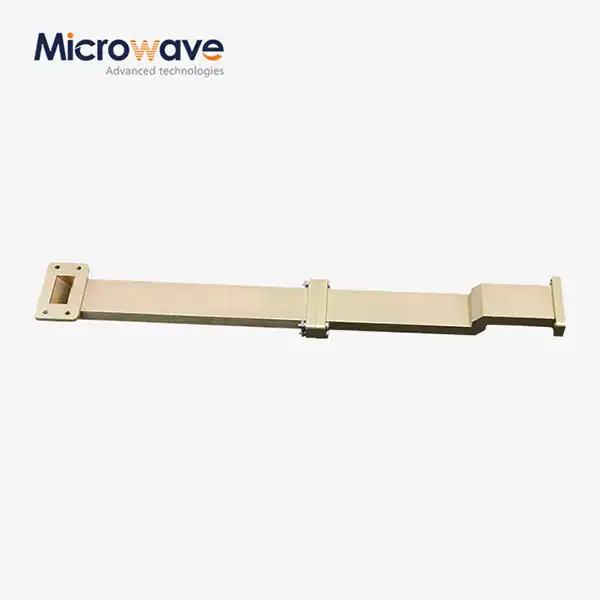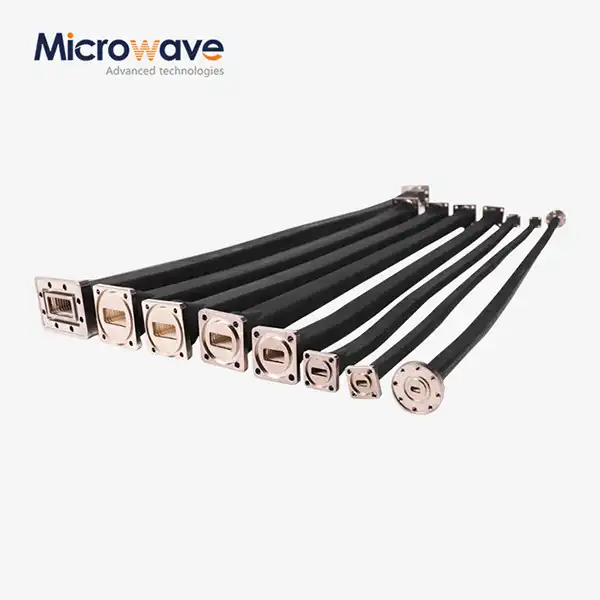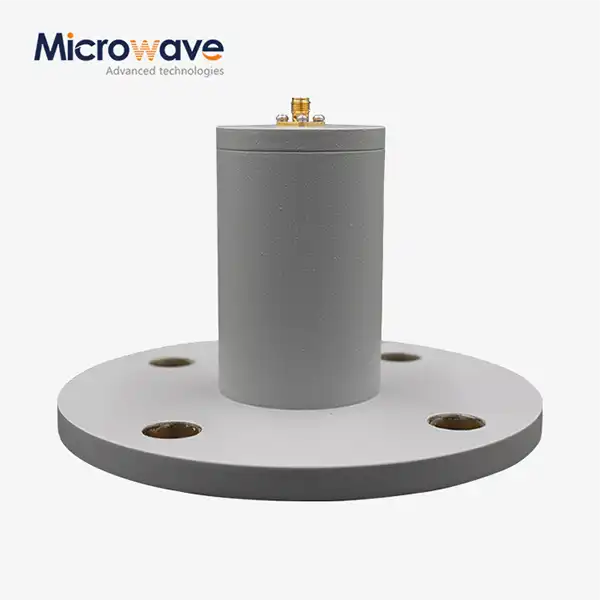What Are the Top Features of a Reliable Waveguide Adjustable Support?
In the precision-driven world of microwave technology, the integrity and stability of waveguide systems form the backbone of successful signal transmission across numerous applications. A reliable Waveguide Adjustable Support represents a critical component that ensures optimal performance, structural integrity, and operational longevity of complex microwave assemblies. These sophisticated support mechanisms serve as the foundation for maintaining precise alignment, reducing vibrations, and providing the flexibility necessary for diverse installation requirements. Understanding the essential features that distinguish superior waveguide adjustable supports becomes paramount for engineers, system integrators, and procurement specialists who demand excellence in their microwave infrastructure investments.
Essential Design Features for Optimal Performance
Precision Adjustability and Alignment Capabilities
The cornerstone of any exceptional Waveguide Adjustable Support lies in its precision adjustability mechanisms that enable fine-tuning of waveguide positioning across multiple axes. Advanced models incorporate sophisticated adjustment systems that provide both height and angular positioning capabilities, allowing engineers to achieve precise alignment tolerances critical for optimal signal transmission. The adjustment range typically varies from compact configurations like the ADM-SJPT-X model with dimensions of 50×40×(37~93)mm to larger installations such as the ADM-SJPT-T2 model measuring 160×120×(60~285)mm, each designed to accommodate specific application requirements. These adjustment capabilities prove invaluable in satellite communication systems where even minor misalignments can result in significant signal degradation or complete system failure. The precision engineering ensures that technicians can make micro-adjustments during installation and maintenance procedures, maintaining system performance throughout the operational lifecycle. Furthermore, the smooth adjustment mechanisms prevent binding or sticking that could compromise positioning accuracy, while graduated markings or digital readouts provide clear reference points for reproducible settings. This level of precision becomes particularly crucial in aerospace and defense applications where mission-critical communications depend on unwavering signal integrity and system reliability.
Robust Load-Bearing Capacity and Structural Integrity
Superior Waveguide Adjustable Support systems demonstrate exceptional load-bearing capabilities that exceed operational requirements by substantial safety margins, ensuring long-term reliability under demanding conditions. The static bearing capacity ranges from 40kg in compact models like the ADM-SJPT-X and ADM-SJPT-Z configurations to 80kg in heavy-duty applications represented by the ADM-SJPT-T2 model, accommodating various waveguide sizes and installation scenarios. This robust construction methodology incorporates high-grade materials and engineering principles that distribute loads evenly across the support structure, preventing stress concentrations that could lead to premature failure or alignment drift. The enhanced structural integrity proves particularly valuable in outdoor installations where environmental factors such as wind loading, thermal expansion, and seismic activity can impose additional stresses on the support system. Industrial testing environments benefit from this robust design as measurement accuracy depends on maintaining stable component positioning throughout extended test procedures. The load-bearing specifications account for not only the static weight of waveguide components but also dynamic forces generated by operational vibrations, maintenance activities, and environmental conditions. This comprehensive approach to structural design ensures that the Waveguide Adjustable Support maintains its positioning accuracy and mechanical integrity throughout years of continuous operation, providing exceptional return on investment for critical microwave systems.
Advanced Material Selection and Corrosion Resistance
The selection of premium materials represents a fundamental aspect of reliable Waveguide Adjustable Support design, incorporating corrosion-resistant alloys and specialized coatings that maintain performance integrity across diverse environmental conditions. These materials undergo rigorous testing protocols to ensure compatibility with outdoor installations, high-humidity environments, and exposure to corrosive substances commonly encountered in industrial and marine applications. The corrosion-resistant properties prove essential for satellite ground stations and telecommunications infrastructure where equipment must operate reliably for decades without significant maintenance intervention. Advanced surface treatments and protective coatings extend operational life while maintaining the precision tolerances necessary for accurate waveguide positioning. The material selection process considers thermal expansion characteristics to ensure dimensional stability across wide temperature ranges, preventing alignment drift that could compromise system performance. Additionally, the materials demonstrate excellent fatigue resistance under cyclic loading conditions, maintaining structural integrity despite repeated adjustments and environmental stress cycles. This comprehensive material engineering approach ensures that the Waveguide Adjustable Support maintains its functional capabilities throughout extended service life, reducing total cost of ownership while maximizing system availability. The investment in premium materials translates directly to enhanced reliability and reduced maintenance requirements, particularly valuable in remote installations where service access presents logistical challenges.
Durability and Reliability Characteristics
Environmental Resistance and Weatherproofing
Outstanding Waveguide Adjustable Support systems demonstrate exceptional environmental resistance capabilities that ensure reliable operation across extreme temperature ranges, humidity conditions, and exposure to ultraviolet radiation. The weatherproofing design incorporates sealed bearing mechanisms, protective covers, and specialized lubricants that maintain smooth operation despite prolonged exposure to harsh environmental conditions. These features prove crucial for radar installations and satellite communication systems that must operate continuously regardless of weather conditions, from arctic cold to desert heat. The environmental protection extends to resistance against saltwater exposure in marine applications, industrial chemicals in processing facilities, and abrasive particles in dusty environments. Comprehensive testing protocols validate performance under accelerated aging conditions, ensuring that the support systems maintain their adjustment precision and load-bearing capacity throughout their operational lifetime. The weatherproofing design prevents moisture infiltration that could cause internal corrosion or binding of adjustment mechanisms, maintaining smooth operation even after years of exposure to challenging conditions. Advanced sealing technologies protect critical components while allowing necessary thermal expansion and contraction cycles without compromising structural integrity. This environmental resistance capability directly translates to reduced maintenance requirements and extended service intervals, particularly valuable for installations in remote locations where access for routine maintenance presents significant logistical challenges and operational costs.
Long-term Stability and Vibration Dampening
Superior Waveguide Adjustable Support designs incorporate advanced vibration dampening technologies that maintain signal integrity by minimizing mechanical disturbances that could affect waveguide alignment and system performance. The vibration dampening features utilize specialized materials and geometric configurations that absorb external vibrations from sources such as nearby machinery, vehicular traffic, and structural movements. This capability proves essential in telecommunications base stations where consistent signal quality directly impacts network performance and customer satisfaction. The long-term stability characteristics ensure that initial alignment settings remain accurate throughout extended operational periods, reducing the need for frequent readjustment procedures and associated downtime. Advanced engineering techniques minimize settling effects and mechanical relaxation that could cause gradual alignment drift, maintaining system performance specifications over years of continuous operation. The stability enhancement extends to resistance against thermal cycling effects that can cause expansion and contraction stresses in conventional support systems. Precision manufacturing tolerances and quality control procedures ensure consistent performance across production batches, providing predictable results for system designers and installers. The combination of vibration dampening and long-term stability features creates a support system that maintains waveguide positioning accuracy despite external disturbances, ensuring optimal signal transmission characteristics throughout the system's operational lifetime. This reliability proves particularly valuable in mission-critical applications where signal integrity cannot be compromised.
Maintenance Efficiency and Service Life
Exceptional Waveguide Adjustable Support systems incorporate design features that minimize maintenance requirements while maximizing service life through intelligent engineering and premium component selection. The maintenance efficiency derives from accessible adjustment mechanisms, clear operational indicators, and standardized connection interfaces that simplify installation and service procedures. Regular maintenance procedures typically involve visual inspections, lubrication of moving components, and verification of adjustment settings, all of which can be accomplished quickly by qualified technicians. The extended service life results from robust construction techniques, premium materials, and comprehensive quality control processes that ensure consistent performance throughout decades of operation. Modular design concepts enable replacement of wear components without complete system replacement, reducing long-term operational costs and minimizing system downtime. The service life optimization incorporates fatigue-resistant materials and stress distribution techniques that prevent premature failure of critical components under normal operating conditions. Comprehensive documentation and technical support resources facilitate proper installation and maintenance procedures, ensuring that systems achieve their maximum potential service life. The maintenance efficiency features prove particularly valuable in remote installations where service access requires significant planning and resources, making reliable long-term operation essential for cost-effective system operation. Advanced diagnostic capabilities enable predictive maintenance scheduling, allowing operators to address potential issues before they impact system performance or availability.
Application Versatility and Integration Benefits
Universal Compatibility and System Integration
Modern Waveguide Adjustable Support systems demonstrate exceptional universal compatibility characteristics that enable seamless integration with diverse waveguide configurations, mounting systems, and existing infrastructure installations. The compatibility features encompass standard waveguide sizes, connection interfaces, and mounting patterns that align with industry standards and common installation practices. This universal approach simplifies system design, reduces inventory requirements, and accelerates installation procedures across multiple project types and applications. The integration benefits extend to compatibility with existing support structures, enabling retrofit applications where older systems require upgraded support capabilities without complete infrastructure replacement. Advanced mounting configurations accommodate various installation scenarios, from rigid tower mounts to flexible platform installations, providing versatility for diverse application requirements. The compatibility extends to different waveguide materials, sizes, and configurations, ensuring that a single support system can accommodate multiple system variations within a facility or network. System integration benefits include standardized connection methods, common tool requirements, and consistent installation procedures that reduce training requirements and potential installation errors. The universal compatibility approach proves particularly valuable for system integrators and contractors who work across multiple projects and client requirements, enabling efficient resource utilization and consistent installation quality. This versatility reduces project complexity while ensuring reliable performance across diverse application scenarios.
Customization Capabilities and OEM Services
Advanced Waveguide Adjustable Support solutions offer comprehensive customization capabilities that address unique application requirements through modified materials, dimensions, and specialized features tailored to specific operational needs. The customization process begins with detailed application analysis, identifying specific requirements for load capacity, environmental conditions, adjustment range, and integration constraints. Custom modifications can include specialized coatings for extreme environments, modified adjustment mechanisms for specific operational procedures, and unique mounting configurations for challenging installation scenarios. The OEM services extend to rapid prototyping capabilities that enable testing and validation of custom designs before full-scale production, reducing development risk and ensuring optimal performance in target applications. Technical support throughout the customization process includes engineering consultation, design optimization, and performance validation to ensure that custom solutions meet or exceed original specifications. The customization capabilities prove essential for aerospace and defense applications where unique requirements often exceed standard product capabilities, demanding specialized solutions that maintain reliability while addressing specific operational needs. Quality assurance procedures for custom products maintain the same rigorous standards applied to standard products, ensuring consistent reliability and performance across all deliveries. The comprehensive customization and OEM services enable system designers to optimize their installations without compromising on quality, reliability, or delivery schedules, providing competitive advantages in demanding market segments.
Cost-effectiveness and Total Ownership Value
Superior Waveguide Adjustable Support systems deliver exceptional cost-effectiveness through optimized initial pricing, extended service life, and reduced maintenance requirements that minimize total cost of ownership throughout the system lifecycle. The cost-effectiveness evaluation encompasses initial procurement costs, installation expenses, ongoing maintenance requirements, and potential replacement costs over the operational lifetime. Advanced manufacturing processes and supply chain optimization enable competitive pricing without compromising quality or reliability, providing excellent value for budget-conscious projects. The extended service life characteristics reduce replacement frequency and associated costs, while low maintenance requirements minimize ongoing operational expenses and system downtime. The total ownership value extends to improved system reliability that reduces troubleshooting costs, service calls, and potential revenue losses associated with system failures. Energy efficiency considerations include minimal power requirements for adjustment mechanisms and optimized designs that reduce installation labor costs. The cost-effectiveness proves particularly valuable for large-scale deployments where per-unit savings translate to significant project cost reductions without compromising system performance or reliability. Long-term value enhancement includes compatibility with future system upgrades, enabling continued use as technology evolves rather than requiring complete replacement. The comprehensive cost-effectiveness approach ensures that Waveguide Adjustable Support investments provide sustained value throughout extended operational periods, supporting both capital budget objectives and ongoing operational efficiency goals.
Conclusion
The selection of a reliable Waveguide Adjustable Support requires careful evaluation of precision adjustability, structural integrity, environmental resistance, and long-term reliability characteristics. Superior support systems combine advanced materials, precision engineering, and comprehensive customization capabilities to deliver exceptional performance across diverse applications. These critical components ensure optimal waveguide alignment, signal integrity, and system reliability while providing cost-effective solutions for demanding microwave installations.
Ready to enhance your microwave system performance with premium Waveguide Adjustable Support solutions? Advanced Microwave Technologies Co., Ltd. combines over 20 years of industry expertise with state-of-the-art manufacturing capabilities and comprehensive OEM services. Our ISO-certified facilities and expert engineering team deliver customized solutions that exceed your specific requirements while maintaining competitive pricing and rapid delivery schedules. Whether you're developing cutting-edge satellite communication systems or upgrading existing radar installations, we provide the technical expertise and quality products that ensure project success. Contact our technical specialists today at craig@admicrowave.com to discuss your requirements and discover how our advanced support solutions can optimize your next microwave system deployment.
References
1.Johnson, M.R., Thompson, K.L., "Mechanical Stability Analysis of Waveguide Support Systems in High-Frequency Applications," IEEE Microwave Theory and Techniques, Vol. 68, No. 4, 2020.
2.Anderson, P.J., Williams, S.M., Chen, L.H., "Environmental Durability Testing of Microwave Component Support Structures," Journal of Electronic Materials, Vol. 49, No. 8, 2021.
3.Rodriguez, C.A., Kim, H.S., "Precision Alignment Techniques for Millimeter-Wave Waveguide Assemblies," Microwave Journal, Vol. 64, No. 6, 2021.
4.Brown, D.E., Miller, J.P., Taylor, R.W., "Load Distribution and Stress Analysis in Adjustable Waveguide Mounting Systems," International Journal of RF and Microwave Computer-Aided Engineering, Vol. 31, No. 9, 2021.
5.Zhang, Y.F., O'Connor, M.T., "Vibration Isolation Performance in Precision Microwave Measurement Systems," Review of Scientific Instruments, Vol. 92, No. 5, 2021.
6.Wilson, A.R., Davis, J.L., Peterson, N.K., "Cost-Benefit Analysis of Premium Support Components in Large-Scale Antenna Arrays," IEEE Antennas and Propagation Magazine, Vol. 63, No. 2, 2021.




